Metal houses are certainly not for everyone, but they are special to those who live in them. They can look out of place, odd or even garish in the traditional neighborhoods that blanket America. In the right setting, however, metal houses can look artful and at home. And metal accents, like copper roofs atop bay windows, have been incorporated into even the most traditional home designs for years. Whether you have an entire house clad in metal or just a few simple accents, let’s look at ways to create a homogenous relationship between your house and your landscape.
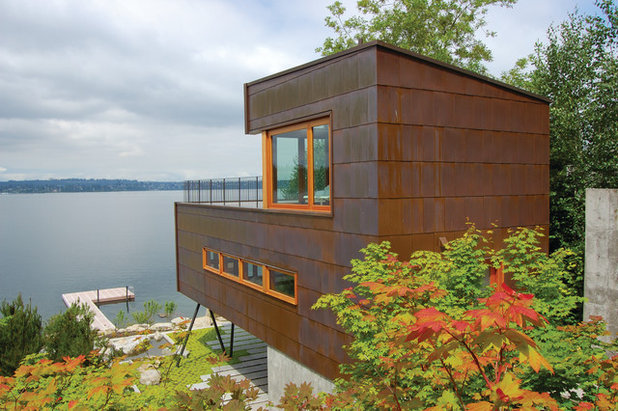
Robert Hutchison Architecture
Copper, Cor-Ten steel and steel or aluminum panels are the most commonly used metals for home cladding today. Metal may be painted, powder coated, sealed to prevent oxidation and rust, given a chemical wash to add a predetermined patina or simply installed as is. Many prefer the last option, allowing local environmental conditions to interact with the metal in a unique way that gives each home a special character and sense of place.
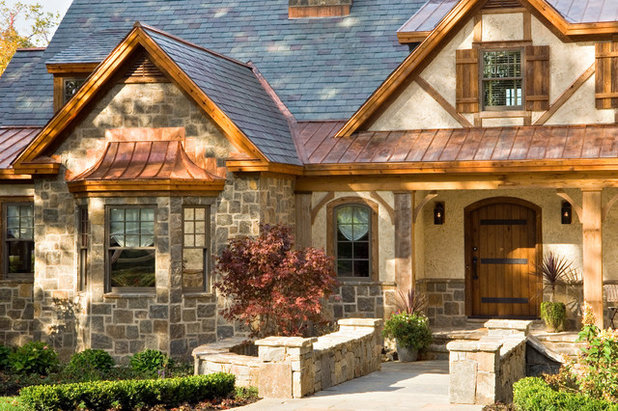
Witt Construction
CopperShown here is a traditional cottage home sporting a copper roof, historically the most frequently used metal in home design. The designer of the landscape surrounding this home has thoughtfully incorporated potted plants and a Japanese maple (
Acer palmatum) to pull hues from the roof and create a homogenous connection between house and garden.
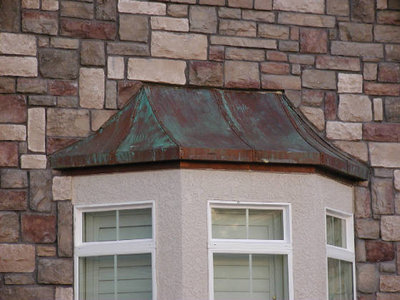
The Metal Shoppe, Custom Metal Design, Fabrication
Keep in mind when using copper that, unless sealed with a clear coat, it will react with salt and other airborne elements to develop a rich patina. This is part of copper’s charm. The patina can take up to 10 years to begin to develop and generally has a blue or green hue. Airborne salt in coastal areas will accelerate this process. Additionally, chemicals may be applied to copper to accelerate and enhance the patina.
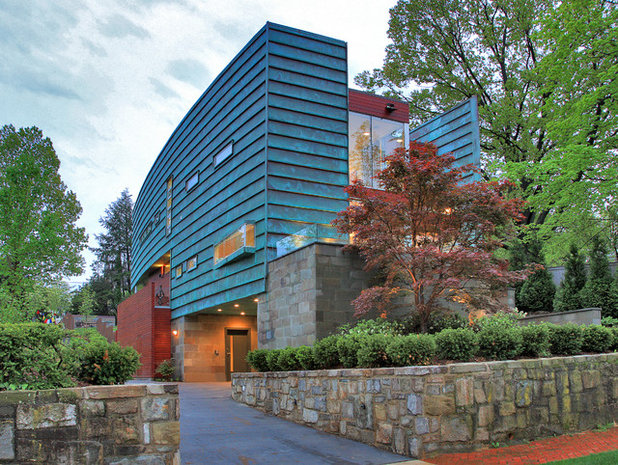
Travis Price Architects
Copper is being used in large doses to clad some higher-end contemporary homes, with stunning results. When working with copper at this magnitude, you should pay careful attention to plant selection. The plants need to work with the new home as well as with the home after the copper develops its patina.
The key to creating the home-garden connection is to use plants with blue foliage to contrast the new copper, as well as plants with rust and orange foliage to contrast the cladding after the patina develops. Here a large Japanese maple (
Acer palmatum) contrasts the copper patina while also pulling the stain color from the wood siding into the landscape.
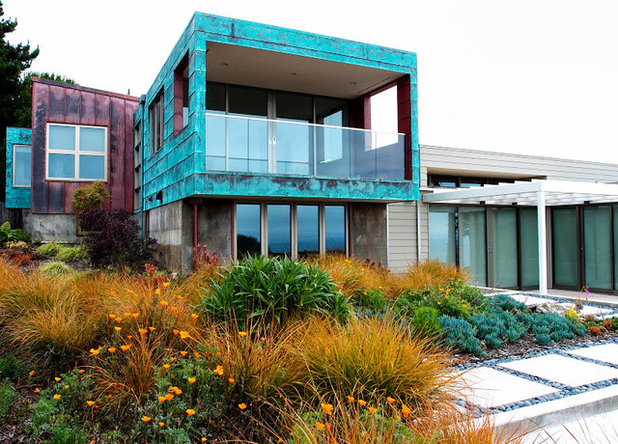
Derviss Design
The designer of this copper-clad beachside home has created a spectacular home-garden connection by choosing an orange and blue plant palette. Additionally, the mounding and spiky plant forms mimic the shapes of indigenous coastal flora.
An appropriate plant palette for a copper-clad home could include shrubs in orange, brown and metallic hues, such as Coppertina, Diablo, Center Glow and Little Devil ninebark (
Physocarpus opulifolious cvs, USDA zones 3 to 8; find your zone); Orange Rocket barberry (
Berberis thunbergii ‘Orange Rocket’, zones 4 to 9); Wine & Roses weigela (
Weigela florida ‘Alexandra’, zones 4 to 8); and Orangeola Japanese maple
(Acer palmatum var
dissectum ‘Orangeola’, zones 5 to 8).
Ornamental grasses in these hues include orange New Zealand sedge (
Carex testacea,
zones 6 to 10) and Bronzita sedge (
Carex flagellifera ‘Bronzita’, zones 7 to 9).
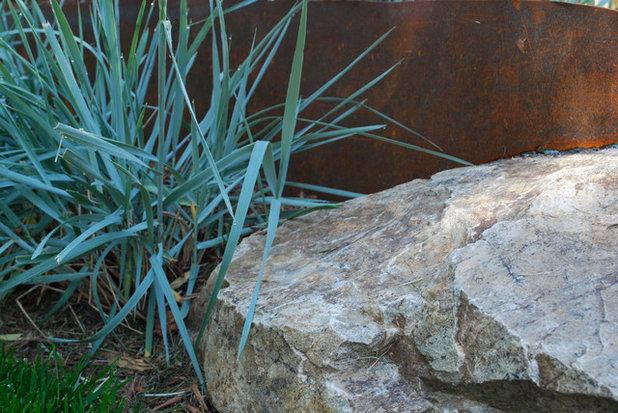
Jay Sifford Garden Design
Suitable plants with blue foliage include ornamental grasses such as this Blue Dune lyme grass (
Leymus arenarius ‘Blue Dune’, zones 4 to 9), Dallas Blues switchgrass (
Panicum virgatum ‘Dallas Blues’, zones 4 to 9) and Elijah Blue fescue (
Festuca glauca ‘Elijah Blue’, zones 4 to 11).
Appropriate shrubs and perennials with blue foliage include Blue Star juniper (
Juniperus squamata ‘Blue Star’, zones 4 to 8), Woodlander’s Blue zenobia (
Zenobia pulverulenta ‘Woodlander’s Blue’, zones 5 to 9), Russian sage (
Perovskia atriplicifolia cvs, zones 4 to 9), cheddar pinks (
Dianthus gratianopolitanus cvs, zones 3 to 9) and Blue Spruce stonecrop (
Sedum reflexum ‘Blue Spruce’, zones 3 to 11).
Shown: Blue Dune lyme grass (
Leymus arenarius ‘Blue Dune’, zones 4 to 9)
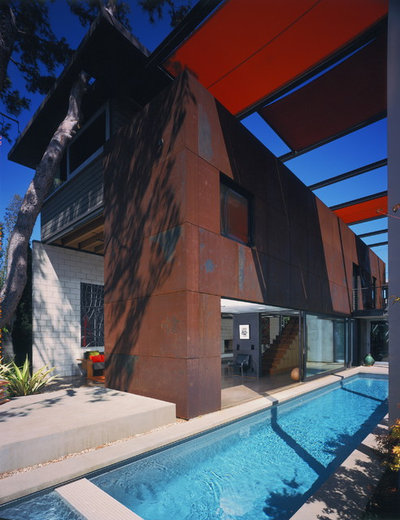 Cor-Ten Steel
Cor-Ten SteelCor-Ten is a weathered steel that was originally developed for use in bridge construction. It develops a rust that actually protects it from further corrosion; in this way it differs from other metal products. The rust begins to develop after several months of exposure to the elements. It has gained popularity as exterior siding for contemporary houses.
Learn more about Cor-Ten steel
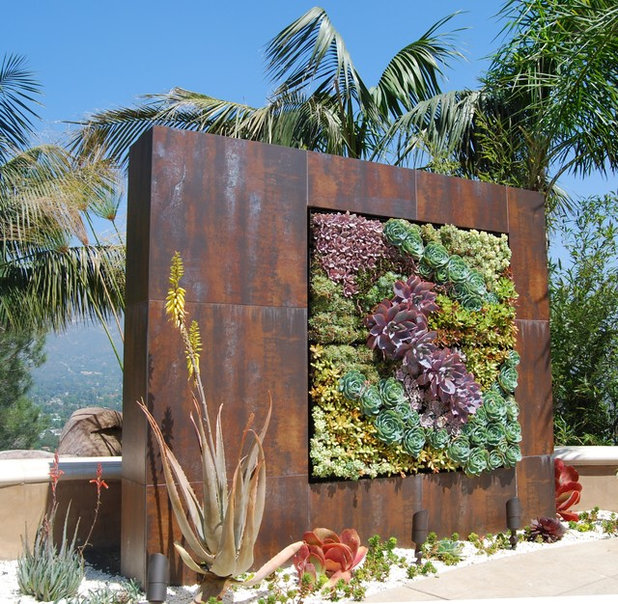
BlueGreen Landscape Design
Suitable plants for a garden surrounding a home clad in Cor-Ten are basically the same as for a copper-sided house. This steel doesn’t develop the blue patina that copper does, but a blue, orange and brown plant palette would show it to best advantage.
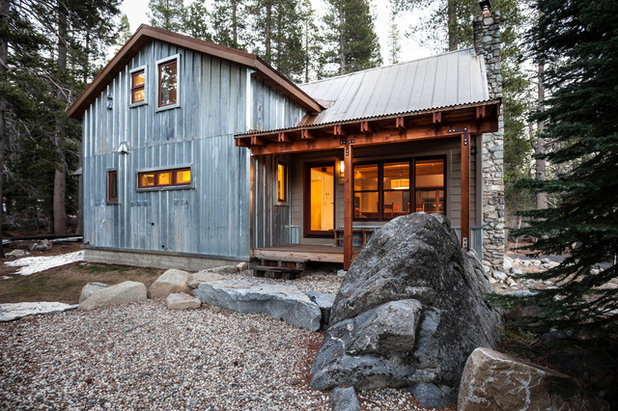
Kat Alves Photography
Corrugated Metal PanelsIntegrating corrugated panels into a homogenous garden scheme can be challenging, but it’s doable, as shown here. Corrugated metal panels may be fabricated of steel or aluminum. Most are galvanized and may eventually rust, which adds its own charm to what many consider to be an austere look. Boulders and gravel in a white to gray palette spread the siding color out into the landscape while softening it.
An appropriate plant palette for a corrugated metal house would include white, variegated and silver-gray foliage, such as lamb’s ear
(Stachys byzantina,
zones 4 to 8), lavender (
Lavandula cvs, zones 4 to 8), River Mist northern sea oats (
Chasmanthium latifolium ‘River Mist’, zones 4 to 9), olive trees (
Olea europaea,
zones 10 to 11) and variegated hydrangea (
Hydrangea macrophylla ‘Variegata’, zones 6 to 9). Additionally, plants with blue foliage will work better than those with dark green leaves.
In the example shown here, the wood trim’s stain color makes a case for introducing some orange and brown foliage.
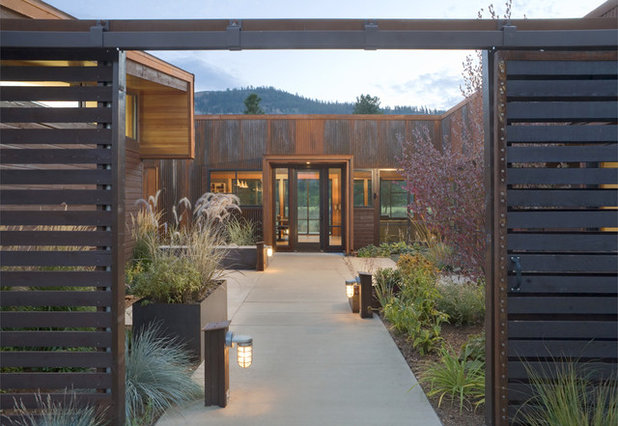
Prentiss Balance Wickline Architects
If the corrugated panels are prone to rust, the plant palette suggested for copper would apply.
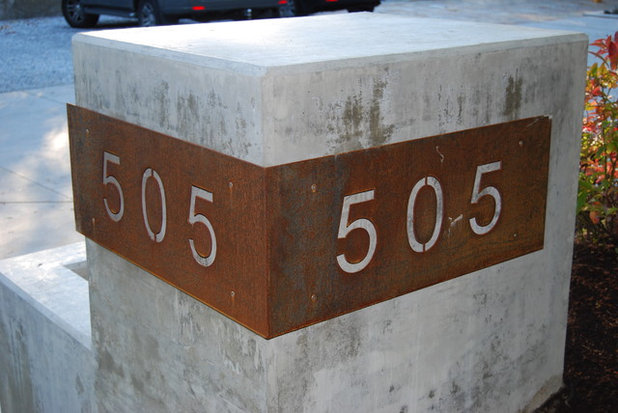
Samuel H. Williamson Associates
Metal AccessoriesRegardless of your choice of metal, create continuity throughout your space by adding metal accents. Light fixtures, house numbers, sculptures, fencing material, pathway edging and step risers are all fair game in your quest to make your metal house feel at home in your landscape.





